Laziness is the engine of progress. Task generator Part 1
During my work as a teacher of mathematics in primary school, it became necessary to often invent similar tasks in order to get a hand. Here laziness and knowledge came to the rescue!
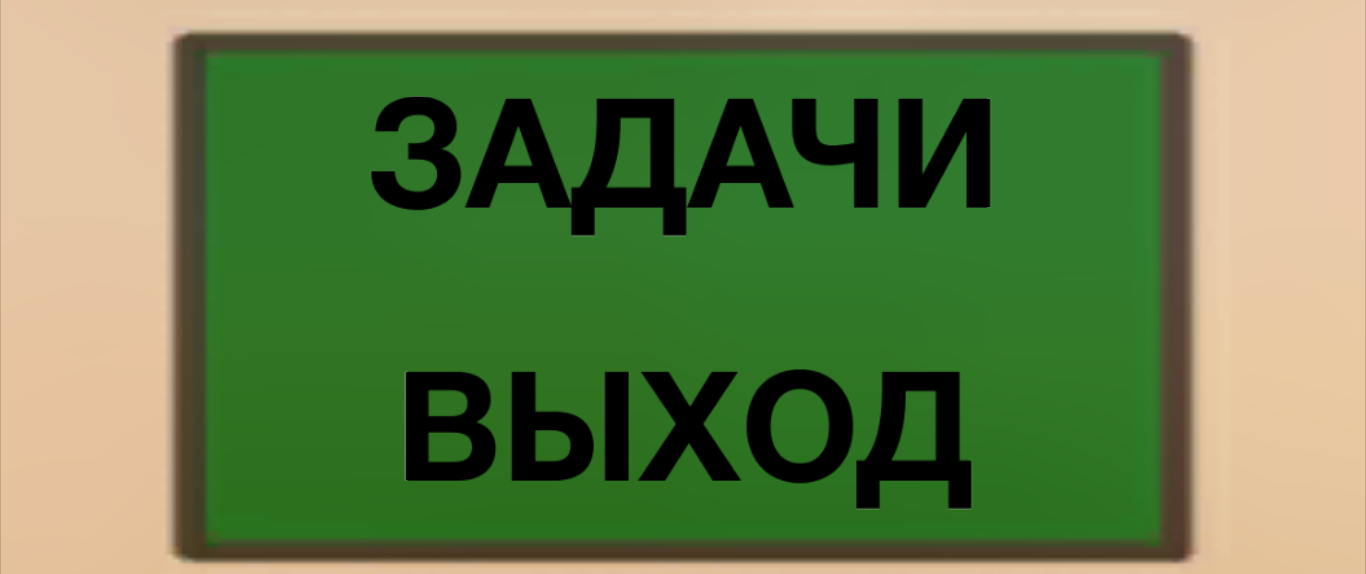
I'll tell you about my experience in developing a task generator application for primary grades.

The task is to measure a certain amount of water with the help of three bottles. At the same time, you can pour water from the source (pour it to the top of the vessel, not to the eye) and pour the entire bottle into the drain. The main task mechanic is to build on the transfusion of water from one vessel to another, pouring it to the top.
')
The trick is that if there are two bottles and their volume of different parity (1 and 3, 2 and 5, 1 and 6, and so on), then having a third vessel (storing the required volume of water there), you can pour any volume.
Therefore, we create a mechanic based on OnMouseDown (when you click on a bottle, it is highlighted, and then click on the drain / source to drain / draw water or another bottle to pour water into it). At the same time it is necessary to make so that capacities were volumes of different parity.

Since the tasks are made for children, the characters should be close to them. Therefore, on the scales, along with weights are seals (small and large).
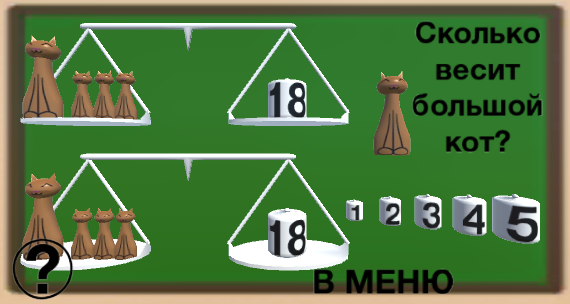
The generation is quite simple: we put a big cat and several small ones on the upper left bowl, with a weight on the upper right weight. On the bottom left we put several (or one) small cats and on the right weight with their weight.
The task was very simple, but suitable for the "first meeting". So complicate the task. On both left bowls we put one big cat and several (but not the same number for different scales) small ones. On the right, as before, the weight of all the cats on the left bowl.
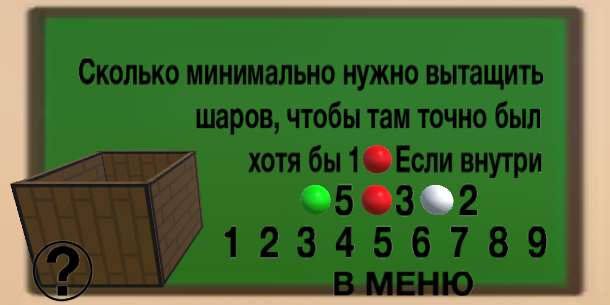
In fact, this is ahidden advertising Dirichlet principle: you need to pull out so many balls out of the box in order to guarantee at least one ball of a given color, if there are some (known) balls inside and it is known how the color is distributed between them.
Generation turned out to be simpler than making a suitable ball pulling animation:
Added something that was not in the morning
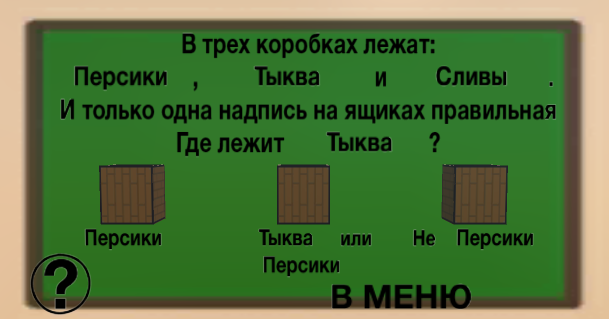
The essence of this task is to find the specified item in boxes with inscriptions, provided that only one of them is correct.
I selected the formula for this task manually, because only the items in the boxes change and what we are looking for. But in order to make it harder to notice, the boxes are reversed (roughly speaking, each box has its own formula pre-attached, but the box's place is not fixed and there may be one of the three). In this case, we assume that the peach, pumpkin and plum are s1, s2 and s3, respectively. Then the first box is s1, the second is s2 or s1, and the third is not s1.
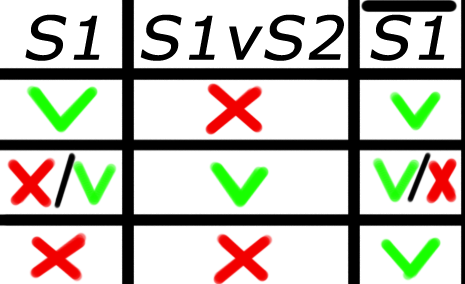
As you can see, only an inscription with not s1 can be true. The whole algorithm is based on that.
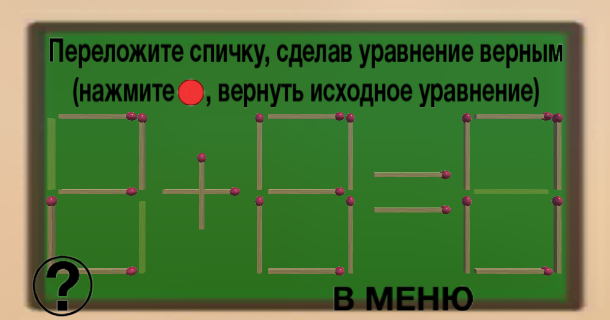
Purpose: to shift one match so that the equation becomes correct.
This is the most interesting and important task for me. Once with a friend we made a table of "transitions of matches." We looked at the numbers that can be obtained from other numbers by removing or adding one match.

The algorithm is no longer a big problem: we create a random equality (a + b = c) until it contains a pair of numbers that can be changed by adding and removing a match (according to the replacement table). After the screen displays the modified numbers laid out of matches.
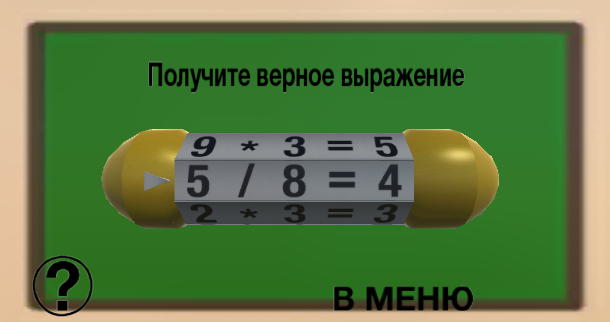
The task is to scroll the wheels of the cryptex so as to get the right equality.
There are many sources of inspiration for this task, as well as goals. Besides the fact that this is an opportunity to sort out hands (children love this), it is also more attractive than ordinary equalities and division tasks.
The rotation mechanism is quite simple: each plane of the wheel is numbered and the value exhibited by this wheel changes as the wheel turns. It seems to be a one-time puzzle, but there is a small trick: there are several wheel variants on one wheel position, which increases the variability of the puzzle solution.
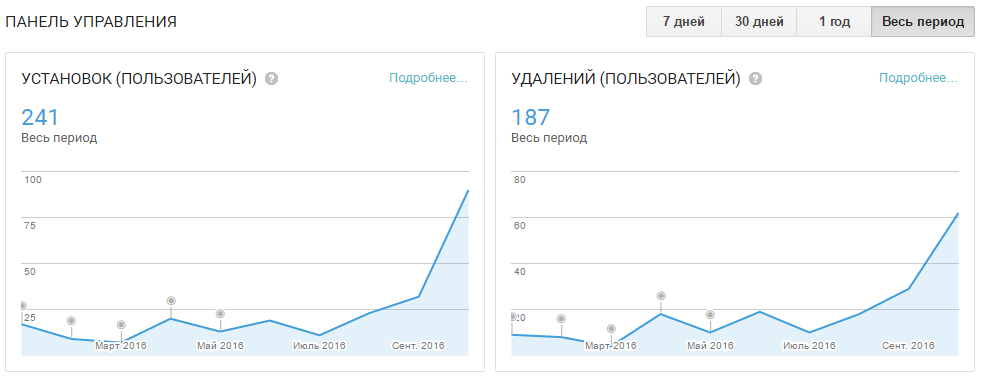
I do not know how, by the standards of Habra, but such distribution only due to finding the application in the application catalog (without ads, posts in VK and other things) suggests that applications of this kind are interesting to people. Let them be inferior in graphics and attractive cartoon characters in general.
Link to the project:
Google play
Github

I'll tell you about my experience in developing a task generator application for primary grades.
Transfusions

The task is to measure a certain amount of water with the help of three bottles. At the same time, you can pour water from the source (pour it to the top of the vessel, not to the eye) and pour the entire bottle into the drain. The main task mechanic is to build on the transfusion of water from one vessel to another, pouring it to the top.
')
The trick is that if there are two bottles and their volume of different parity (1 and 3, 2 and 5, 1 and 6, and so on), then having a third vessel (storing the required volume of water there), you can pour any volume.
Therefore, we create a mechanic based on OnMouseDown (when you click on a bottle, it is highlighted, and then click on the drain / source to drain / draw water or another bottle to pour water into it). At the same time it is necessary to make so that capacities were volumes of different parity.

Weighing
Since the tasks are made for children, the characters should be close to them. Therefore, on the scales, along with weights are seals (small and large).

The generation is quite simple: we put a big cat and several small ones on the upper left bowl, with a weight on the upper right weight. On the bottom left we put several (or one) small cats and on the right weight with their weight.
The task was very simple, but suitable for the "first meeting". So complicate the task. On both left bowls we put one big cat and several (but not the same number for different scales) small ones. On the right, as before, the weight of all the cats on the left bowl.
Boxes

In fact, this is a
Generation turned out to be simpler than making a suitable ball pulling animation:
- We generate distribution of colors of balls
- Paint the balls in the box according to the color distribution
- Choose the color of the desired ball and calculate the desired amount
Upd
Added something that was not in the morning
Logical statements

The essence of this task is to find the specified item in boxes with inscriptions, provided that only one of them is correct.
I selected the formula for this task manually, because only the items in the boxes change and what we are looking for. But in order to make it harder to notice, the boxes are reversed (roughly speaking, each box has its own formula pre-attached, but the box's place is not fixed and there may be one of the three). In this case, we assume that the peach, pumpkin and plum are s1, s2 and s3, respectively. Then the first box is s1, the second is s2 or s1, and the third is not s1.

As you can see, only an inscription with not s1 can be true. The whole algorithm is based on that.
Matches

Purpose: to shift one match so that the equation becomes correct.
This is the most interesting and important task for me. Once with a friend we made a table of "transitions of matches." We looked at the numbers that can be obtained from other numbers by removing or adding one match.

The algorithm is no longer a big problem: we create a random equality (a + b = c) until it contains a pair of numbers that can be changed by adding and removing a match (according to the replacement table). After the screen displays the modified numbers laid out of matches.
Numeric cryptex

The task is to scroll the wheels of the cryptex so as to get the right equality.
There are many sources of inspiration for this task, as well as goals. Besides the fact that this is an opportunity to sort out hands (children love this), it is also more attractive than ordinary equalities and division tasks.
The rotation mechanism is quite simple: each plane of the wheel is numbered and the value exhibited by this wheel changes as the wheel turns. It seems to be a one-time puzzle, but there is a small trick: there are several wheel variants on one wheel position, which increases the variability of the puzzle solution.
Statistics and application

I do not know how, by the standards of Habra, but such distribution only due to finding the application in the application catalog (without ads, posts in VK and other things) suggests that applications of this kind are interesting to people. Let them be inferior in graphics and attractive cartoon characters in general.
Link to the project:
Google play
Github
Source: https://habr.com/ru/post/313488/
All Articles